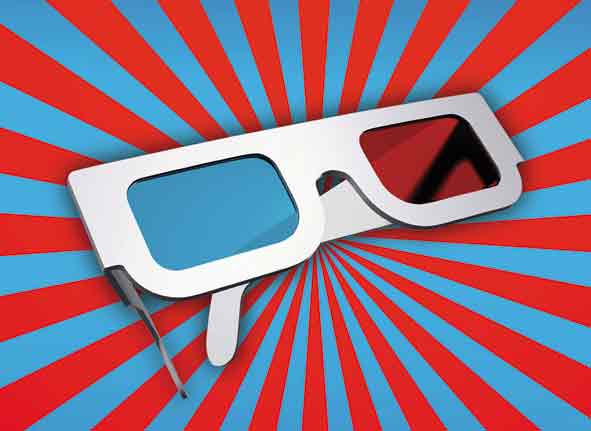How 3DTV works

Some require glasses to view the image, some don’t. Some offer a stereoscopic image that replicates the way we see with our eyes, while other approaches are more exotic offering multiple views of a scene, which means as you move around the display, the view of the scene changes with your position.
In a whitepaper titled 3D and 3D Screen Technology, Da-Lite Screen Company North American vice president of sales Blake Brubaker writes that in order to understand how 3D can be applied to home applications, it is necessary to gain an understanding of basic stereoscopic 3D technology.
ADVERTISEMENT
“Providing that impairment does not exist in one or both eyes, the human brain is constantly processing two images, one from the left eye and another from the right eye. This is commonly referred to as binocular vision,” he says.
“Much like the two eyes in our heads, a 3D camera has two lenses and captures two unique images with a predetermined parallax. These two images are then stored in an electronic manner, processed and edited in ways similar to those used with a 2D image.”
Once the content is created, the way in which the images are presented to the intended audience can vary widely. Not only does the technology vary, the quality of the images produced by each of the technologies varies as well.
Perhaps the most inexpensive and lowest quality way to present a 3D image is through a technology known as colour anaglyph. With colour anaglyph, one of the two images is tinted with a red filter while the other is tinted with a cyan filter. Viewers then wear glasses that have corresponding filters.
Another method for displaying 3D images is that of alternate-frame sequencing, also known as an active stereoscopic display. Through Active 3D, the left and right eye images are alternately flashed on the screen at a rate exceeding 100 frames per second. The viewer then wears powered shutter glasses that contain switchable active LCD lenses.
“The opening and closing of the lenses in the glasses are sequenced with the images to ensure that the left eye only sees the left eye image and vice versa. As a result of the high frame rate, the brain fuses the two images resulting in the viewer perceiving one continuous 3D image,” Blake writes.
“While this type of technology typically costs more than colour anaglyph and is a bit more complex, it has much better colour reproduction and usually better resolution. Any issues with complexity are far outweighed by the increase in image quality.”
The last method for producing 3D images with a projector/screen combination is based on polarisation. A passive technology, polarisation is widely used in theatres due to the fact it is relatively easy to use and has a lower associated cost – i.e. paper-framed polarised glasses are very inexpensive while active LCD glasses can be cost prohibitive, especially for a commercial movie theatre.
-
ADVERTISEMENT
-
ADVERTISEMENT

